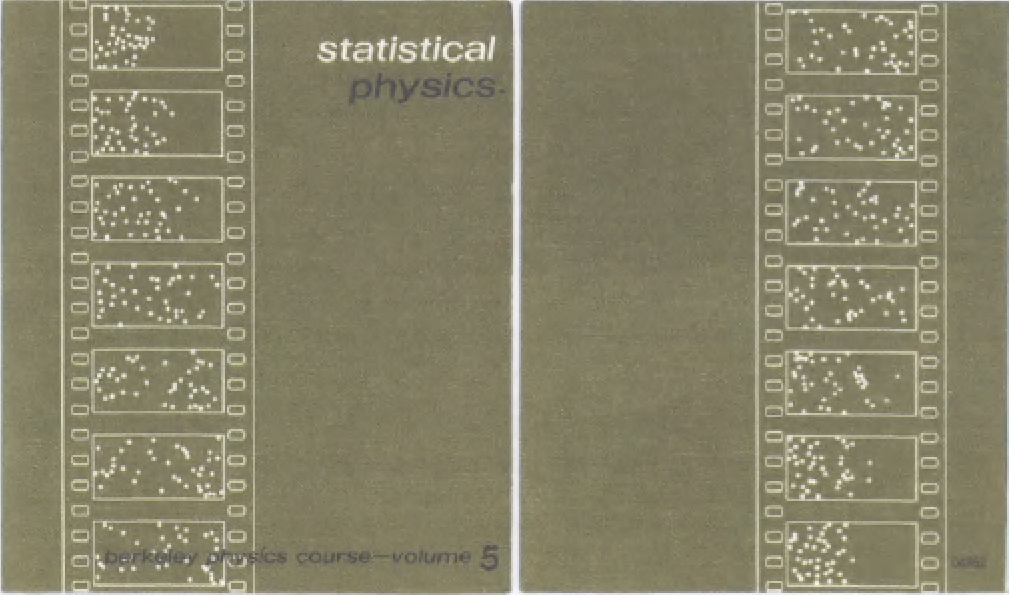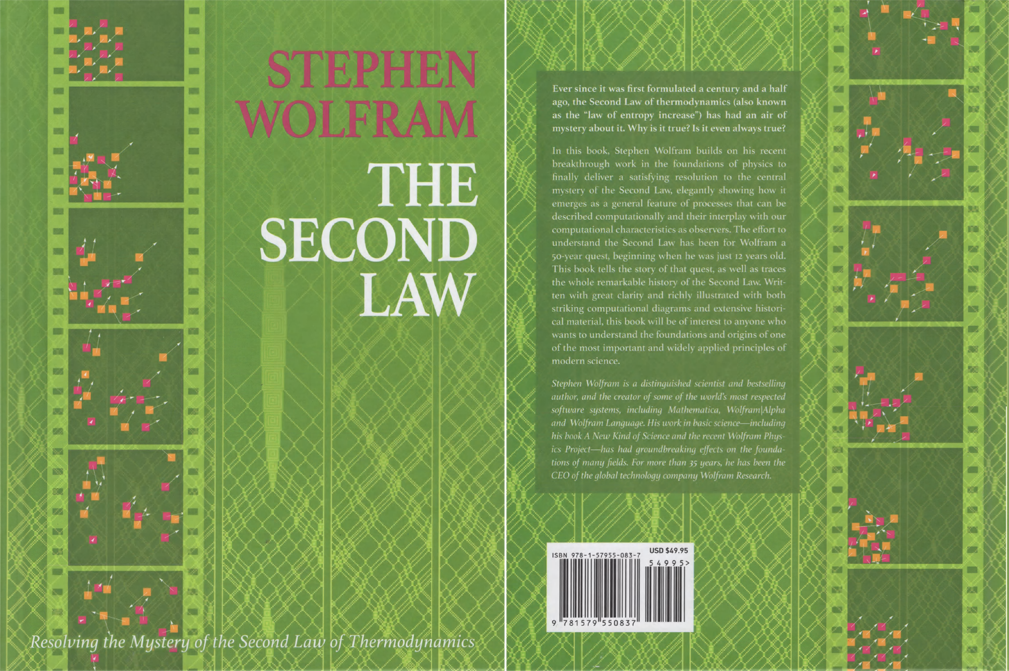The book covers
The movie strips on the covers illustrate the fundamental ideas of irreversibility and fluctuations by showing the motion of 40 particles inside a two-dimensional box. The movie strips were produced by an electronic computer programmed to calculate particle trajectories. (For details, see pp. 7, 24, and 25 inside the book.) The front cover illustrates the irreversible approach to equilibrium starting from the highly nonrandom initial situation where all the particles are located in the left half of the box. The back cover (read in the upward direction from bottom to top) illustrates the irreversible approach to equilibrium if, starting from the initial situation at the top of the front cover, all the particle velocities are reversed (or equivalently, if the direction of time is imagined to be reversed). The back-cover and front-cover movie strips together, read consecutively in the downward direction, illustrate a very large fluctuation occurring extremely rarely in equilibrium.


 And in his recent book (p.219), Wolfram describes Fred's book that started his fifty-year quest to understand the second law.
And in his recent book (p.219), Wolfram describes Fred's book that started his fifty-year quest to understand the second law.
 What is the backstory of the book cover that launched my long journey with the Second Law? The book was published in 1965, and inside its front flap we find:
What is the backstory of the book cover that launched my long journey with the Second Law? The book was published in 1965, and inside its front flap we find:




